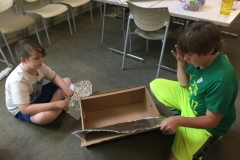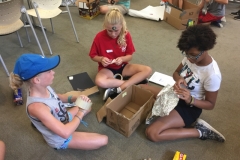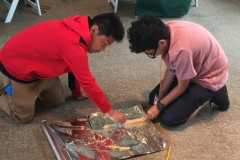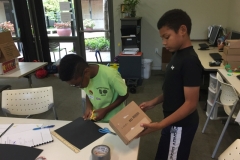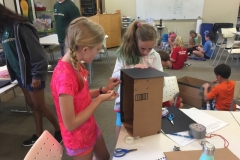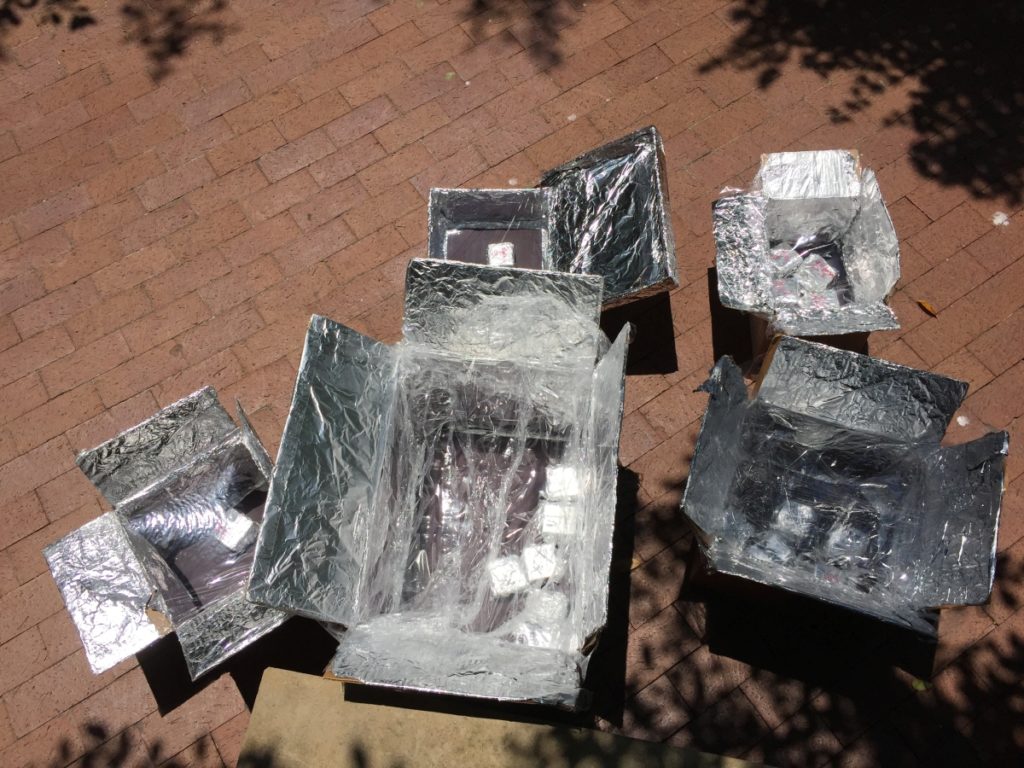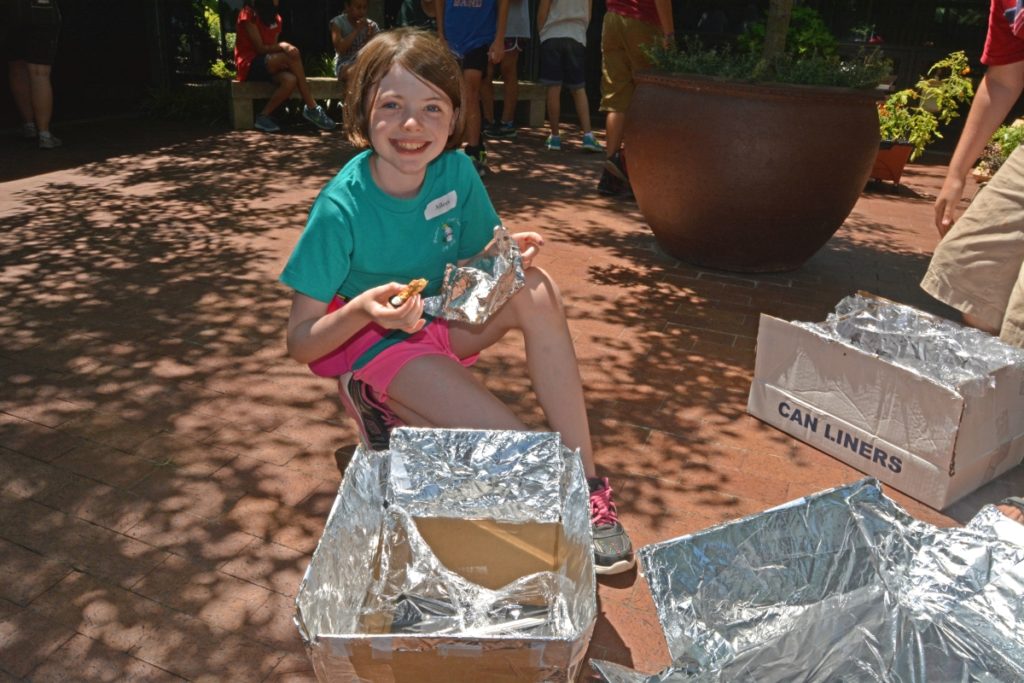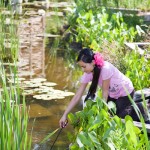Get Cooking in Your Backyard This Summer with Solar Ovens
Each summer, hundreds of kids visit the Dallas Arboretum for summer camps, and one of the most popular camp activities each year is the construction of solar ovens. This year, our SciQuest campers will be constructing ovens, but with just a few dollars (or less) in supplies, you can entertain kids or students for hours at home during peak summer heat!
First Steps: Assemble Materials and Brainstorm
These are the everyday materials that you will need:
- cardboard boxes (shoe and pizza boxes work great)
- aluminum foil
- black paper
- plastic wrap (or tempered glass with parent assistance)
- tape
- S’more ingredients
Campers in the beginning stages of construction
At camps, we first present students with a challenge.
Given a supply of a few, specific materials, how can you harness the power of the sun to create s’mores?
Once they’ve started thinking about the challenge, we help them think through a list of more targeted questions:
- What is a solar oven?
- How does it work?
- What are the necessary parts?
- Can you build a working solar oven using everyday materials?
- How hot will it get?
- How will we measure success?
- What are the strengths and weaknesses of your design?
- How could you improve the design if given the time and resources?
Bringing your Plans to Fruition!
Then, comes the fun part – building! It is astonishing how intently focused the groups become on this step. You’d think they weren’t even on summer vacation…
The Solar Ovens are under construction – with campers dreaming of future s’mores!
Once the solar ovens are built, it is time to test them out. This is where your kids will want to think about how to capitalize on the angle of the sun, and, depending on what they intend to cook, how often they’ll want to reposition the oven.
Even with our simple designs, the ovens can get hot, so we recommend oven mitts. Also, throw on some sunglasses, too!
How Does it Work?
In short, solar ovens use reflective materials, like foil, to concentrate the sun’s radiant energy to a focal point (the cooking zone). This is maximized by using the color black, which absorbs the most heat, as many of us are reminded annually when we sit on a hot car seat! The plastic wrap or glass covering helps trap that radiant energy in the oven, rather than allowing it to escape. Again, this is why we crack our car windows open on hot days.
Solar ovens can be a source of summer entertainment, but they can also be used to explore a wide variety of academic standards including forms of energy, energy transfer, properties of matter, chemistry, and more. They’re also a great opportunity to encourage creative thinking, perseverance and grit. Plus, it’s easy for kids to stay engaged when there is a food payout.
If anything will get them outdoors and away from a digital screen during the height of summer, solar ovens is it!
For additional design options and more complete descriptions, check out these great resources:
NASA Solar Oven Lesson Plan
Scientific American Pizza Box Solar Oven
Herbangardener Blog with Great Cooking Tips
Solar Cooking Wiki with Dozens of Build Designs
Dustin Miller
Director of Education
Dallas Arboretum
Related Posts
Comments are closed.


